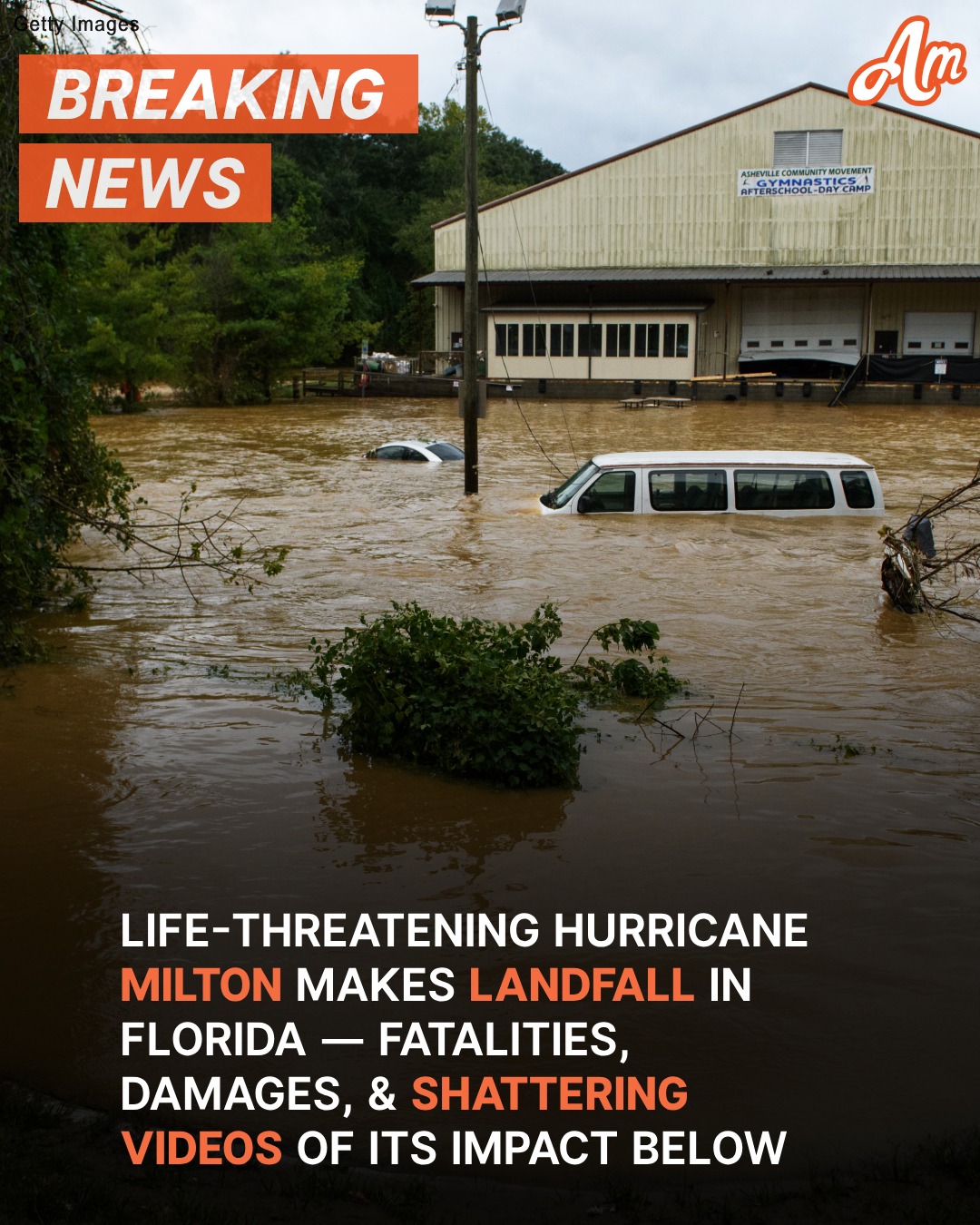Hurricane Milton Hits Florida’s Gulf Coast, Leaving Widespread Destruction
Darkness descended on Florida’s Gulf Coast as Hurricane Milton slammed into the state, bringing deadly tornadoes and widespread flooding that left millions without power and entire communities in ruins.

The storm, classified as a Category 3 hurricane, made landfall near Siesta Key in Sarasota County on October 10, just after 8:30 p.m. With winds surpassing 120 mph, the hurricane unleashed a wave of destruction. Sarasota, Manatee, and Hardee counties were among the hardest hit, with over 1.1 million homes and businesses left in the dark.
The Florida Division of Emergency Management (FDEM) took to social media, warning residents to “continue to shelter in place and remain vigilant.” As the storm surged closer to the coast, a series of tornadoes began wreaking havoc in St. Lucie County, inflicting catastrophic damage and causing fatalities.
Sheriff Keith Pearson confirmed multiple deaths at the Spanish Lakes Country Club, a senior community near Fort Pierce. However, search and rescue operations were still ongoing, making it difficult to determine the exact number of casualties. Emergency responders were “listening for life,” Pearson said, as they sifted through the rubble in search of survivors.
Throughout St. Lucie County, the destruction was extensive, with mobile homes in senior communities bearing the brunt of the damage. According to FDEM Director Kevin Guthrie, 125 homes were confirmed destroyed statewide. The relentless tornadoes, coupled with the hurricane’s sheer force, turned peaceful communities into disaster zones.
Governor Ron DeSantis reported that the storm triggered 116 tornado warnings across the state, with 19 confirmed touchdowns. He emphasized how vast the storm’s impact was, stretching from the Gulf Coast to central Florida.
One of the hardest-hit areas was St. Petersburg, which saw unprecedented rainfall in a short period. More than nine inches of rain fell within three hours, an event that weather experts called a rare, one-in-1,000-year occurrence. The National Hurricane Center issued a flash flood emergency for St. Petersburg, as well as for Tampa and Clearwater.
The torrential rain caused dangerous flooding throughout the region. St. Petersburg’s Albert Whitted Airport reported 16.61 inches of rainfall on October 9 alone. As the storm raged, wind gusts at Sarasota-Bradenton International Airport reached 102 mph, while Egmont Channel saw gusts of up to 105 mph. At the time, Hurricane Milton was 20 miles northeast of Sarasota, steadily moving east-northeast at 16 mph.
Given the hurricane’s massive rainfall, the National Weather Service issued an urgent warning for life-threatening flash floods. Rainfall totals that would normally accumulate over three months occurred in just one day, creating perilous conditions for residents. Emergency alerts urged those in the path of the storm to seek higher ground immediately and avoid flooded areas.
State and local officials have mounted a comprehensive emergency response to the disaster. Rescue teams and task forces have been deployed across affected areas, working tirelessly to locate and aid survivors. Sheriff Pearson made clear that their top priority was saving lives. “Our No. 1 goal is life safety,” he said as rescuers continued their search for people trapped under debris.
Although Hurricane Milton began to weaken slightly as it moved further inland, it still posed a major threat. Florida officials advised residents to stay alert and follow all emergency instructions as the state faces the storm’s aftermath. With thousands of families displaced and communities grappling with the destruction, the full toll of Hurricane Milton’s impact is yet to be seen.





